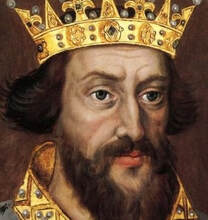The 1535 Royal Progress
Blog Post Below Please Scroll Down
|
By Mark Holinshed
|
 Sir Thomas More
Sir Thomas More
 Francis I, King of France.
Would Pope Paul III really call upon Anne de Boulogne's patron to execute the papal bull and deprive Henry VIII of his kingdom?
Francis I, King of France.
Would Pope Paul III really call upon Anne de Boulogne's patron to execute the papal bull and deprive Henry VIII of his kingdom?
 Thomas Cromwell M.P. for Taunton
Thomas Cromwell M.P. for Taunton
 Wiltshire boasted vastly more Members of Parliament than any other county.
Wiltshire boasted vastly more Members of Parliament than any other county.

|
Henry VIII, the Reign.
|
Henry VIII, the Reign.
|